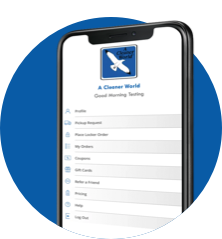A Cleaner World Blog
Proper Table Etiquette
My son is 13 years old; translation, his table manners sometimes aren’t the best, especially at home. I guess I should be thankful that he makes some attempts while we are dining out. But the truth is, as I started doing research for this post, I am failing at a few of the details. Today we’re going to focus on how you should conduct yourself at the dinner table while eating, taking a break, passing food, and completing the meal. Down the road we’ll take a look at properly setting the table and hosting a meal.
The Napkin
- At informal meals, place the napkin in your lap as soon as you sit down.
- At formal events, wait for the hostess to remover her napkin and place it in her lap before placing your napkin in your lap.
- If you need to leave the table temporarily, place the napkin on your chair.
- When the meal is over, fold your napkin and place it to the left of your place setting.
Eating
- When there are only a few folks at the table, wait until everyone has been served before you begin eating.
- At a large gathering, formal meal, or business meal, either wait until everyone is served or when the host invites you to begin.
Resting Your Utensils
Before we discuss how to place your utensils while taking a break, we first need to go over the two styles of dining – American Style versus Continental Style. With American Style dining, you hold the fork in your left hand and the knife in your right; when holding the utensils, they look like extensions of your pointer finger on each hand. Once you cut a piece of food, you set your knife down diagonally across the top of your plate and transfer the fork to your right, while placing your left hand in your lap. Your left-hand stays in your lap until you need to cut another bite.
In Continental Style dining, the fork is held in the left hand with the tines down and is used for placing food into your mouth. The knife is the right hand for cutting. Both utensils are used together. So, when it comes to resting your utensils, here’s the scoop:
- For American Style, rest your knife and fork, tines up, diagonally at the top right of your plate.
- For Continental Style, rest your fork, tines up and facing toward the right side of the table, slightly angled at the center of your plate and your knife facing toward the left side of the table, slightly angled at the center of your plate. They should look like an upside-down V, with the tips of each utensil pointing toward each other.
Passing Food
- Unless an item is being passed to a specific person, always pass to the right.
- One guest holds the dish as the next guest takes some food, or the dish can be simply passed to a person who serves themselves.
- Heavy dishes can be placed on the table with each pass.
- For bread, if it is not cut, cut a couple pieces and offer them to the person to your left. Then pass the basket to the right. Never touch the bread with your fingers; instead use the cloth in the basket.
- Place both bread on butter onto your bread plate on the left. To eat, break off a bite-sized piece, put some butter on it, then eat it.
When the Meal is Over
- If it is a formal meal, the table will be cleared by servers.
- If it is an informal dinner party, the host will likely clear the table with some help from a guest or two.
- If it is a family meal, everyone should help clear the table.
That’s a lot of rules, and if I’m perfectly honest, I had no idea that there were styles of dining. The truth is, as long as you chew with your mouth closed, don’t put your elbows on the table, and help clear the dirty dishes, I’m a happy host. What makes me really happy is that I don’t have to worry about taking care of my table linens, thanks to A Cleaner World.



